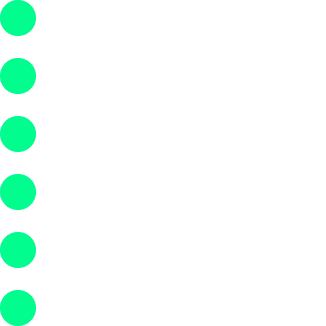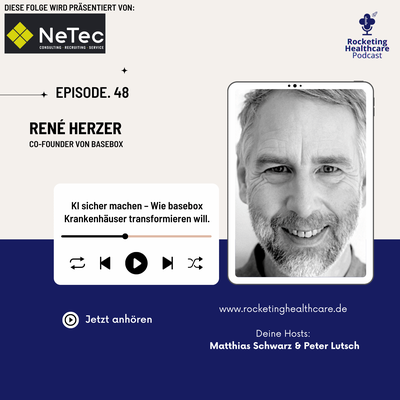KI mit Kontrolle
basebox ist das Management-System für sichere KI in Ihrer Infrastruktur.

Kontrolle über KI
Unternehmen stehen vor der Aufgabe, KI sicher zu nutzen. basebox ist das Management-System für den kontrollierten KI-Einsatz in Ihrer bestehenden Infrastruktur. Sie behalten die Kontrolle über Daten, Prozesse und Kosten.

Unabhängigkeit bewahren
Mit basebox nutzen Sie KI ohne Cloud-Abhängigkeit und ohne Eigenentwicklung. Das System läuft in Ihrer Infrastruktur. Ihre Unternehmensdaten bleiben geschützt. Die Integration erfolgt nach etablierten Standards.

Was basebox leistet
Zentrale Steuerung
- Zuweisung von Zugriffsrechten für Teams
- Skalierung nach Bedarf
- Kostenkontrolle
Nahtlose Integration
- Einbindung in bestehende IT-Systeme
- Nutzung vorhandener Zugangsdaten
- Anbindung an Fachanwendungen
- Kontrollierter Datenzugriff
Maximale Sicherheit
- Betrieb On-Premise oder in Private Cloud
- Datenverbleib im Unternehmen
- Präzise Zugriffssteuerung
- Geschlossener Datenkreislauf
- Erfüllt Sicherheitsstandards deutscher Kliniken

Sicherheit Made in Germany
Es werden keine Daten oder Prompts gespeichert.
- Hosted in Europa
- Ende-zu-Ende Verschlüsselung
- DSGVO-konform

Beispielhafte Anwendungsfälle

Alle Ihre Texte: Effizient für Sie verfasst
Verstehen, vereinfachen, zusammenfassen, übersetzen, korrigieren, schreiben, kürzen. Akademisches Schreiben. Alles mit dem Text-Assistenten.

Arztberichte zur Entlassung korrigieren
Nach eigener Vorlage strukturieren, korrigieren.

Effizientes Wissensmanagement
Intranet-Index, Medizinische Leitlinien (S3) und Checklisten, Anleitungen und Handbücher, Fragen zu Word-, PDF-, Excel-Dateien.

Entlasten Sie die Verwaltung
Leistungsbeschreibungen für Ausschreibungen

Ihr Assistent bei Finanzen und Recht
Texte erzeugen, lesen, analysieren, gliedern, umformen. Dateien extrahieren.

Lassen Sie sich bei Ihrer Personalarbeit unterstützen
Stellenausschreibungen verfassen, Arbeitszeugnisse erstellen.

Authentische Texte für Ihre Öffentlichkeitsarbeit
Social Media, Blog-Einträge, Broschüren-, Werbetexte schreiben.
Große und kleine Organisationen nutzen basebox
basebox lässt sich sicher skalieren, so dass auch tausende Mitarbeiter mit der KI effizient arbeiten können.
Blog

KI im Krankenhaus-Einkauf: 9 praktische Anwendungen für den Arbeitsalltag
-
by Rene Herzer
- ,
Der Einkauf in Krankenhäusern steht unter enormem Druck: Kosten senken, Qualität sichern und gleichzeitig den Überblick über tausende Artikel behalten. Künstliche Intelligenz kann hier wertvolle Unterstützung bieten – und zwar ohne komplizierte IT-Projekte. Wie KI den Krankenhaus-Einkauf effizienter macht Bei
Weiterlesen

Europas digitale Unabhängigkeitserklärung: On-Premise KI-Souveränität Made in Germany
-
by Lizzy Herzer
- ,
Während US-amerikanische Anbieter den KI-Markt dominieren, stehen europäische Unternehmen vor einer Grundsatzfrage: Wie lassen sich KI-Vorteile nutzen, ohne Datenkontrolle aufzugeben? Die Gründer von basebox identifizierten diese Lücke und entwickelten ein KI-Management-System, das vollständig innerhalb der eigenen Infrastruktur operiert. Die rasante
Weiterlesen

Sichere KI im Krankenhaus: basebox-Gründer René Herzer im Rocketing Healthcare Podcast
-
by Lizzy Herzer
- ,
Im Gesundheitswesen stellt sich eine zentrale Frage: Wie können Krankenhäuser KI sicher und effektiv nutzen? Die neueste Folge des Rocketing Healthcare Podcasts liefert hierzu wertvolle Einblicke. In der aktuellen Episode begrüßen Moderatoren Matthias Schwarz und Peter Lutsch unseren Co-Founder René
Weiterlesen

Kritische Infrastrukturen (KRITIS): Lebensadern unserer Gesellschaft
-
by Lizzy Herzer
- ,
In unserer hochvernetzten Welt gibt es Einrichtungen, ohne die unser Alltag kaum vorstellbar wäre. Diese sogenannten Kritischen Infrastrukturen bilden das Rückgrat unserer Gesellschaft – doch was genau verbirgt sich hinter diesem Begriff? Was sind Kritische Infrastrukturen? Kritische Infrastrukturen, kurz KRITIS,
Weiterlesen
Newsletter abonnieren und immer auf dem Laufenden bleiben.
